Cannot Remove a Language from Windows 10 (Fix)
In Windows 10, a language can stay in Settings or on the taskbar even after you remove it, and it may come back after a restart because of a system link or an update bug. This means Windows still thinks the language is active. It may be locked because it’s tied to the install image or set as a system default.
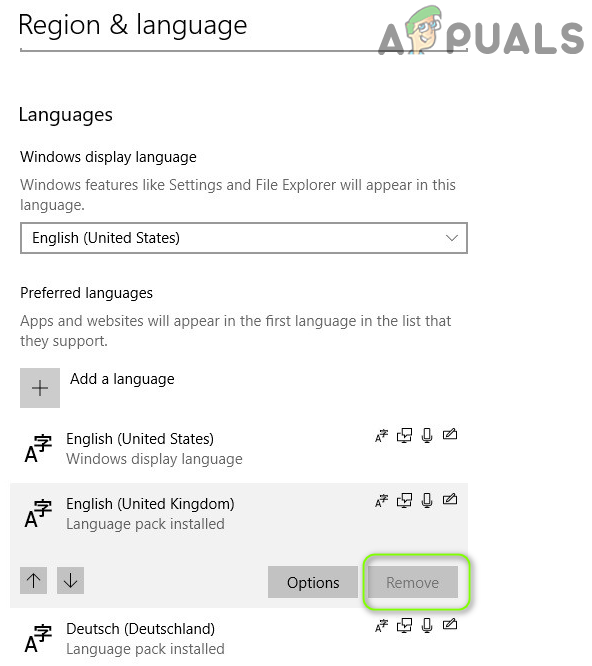
The most common cause is a bug from an April update that blocks removal of the original install language. Other causes include OEM default languages and wrong registry settings.
1. Edit the Language Settings
If your language settings aren’t configured correctly, you may not be able to remove a language. In this case, adjusting those settings should help. Before you proceed, make sure the language you want to remove (and its keyboard layout) isn’t selected in the Language bar.
1.1. Change the Display Language
- Press the Windows key & open Settings.
- Now select Time & Language & go to the Language tab.
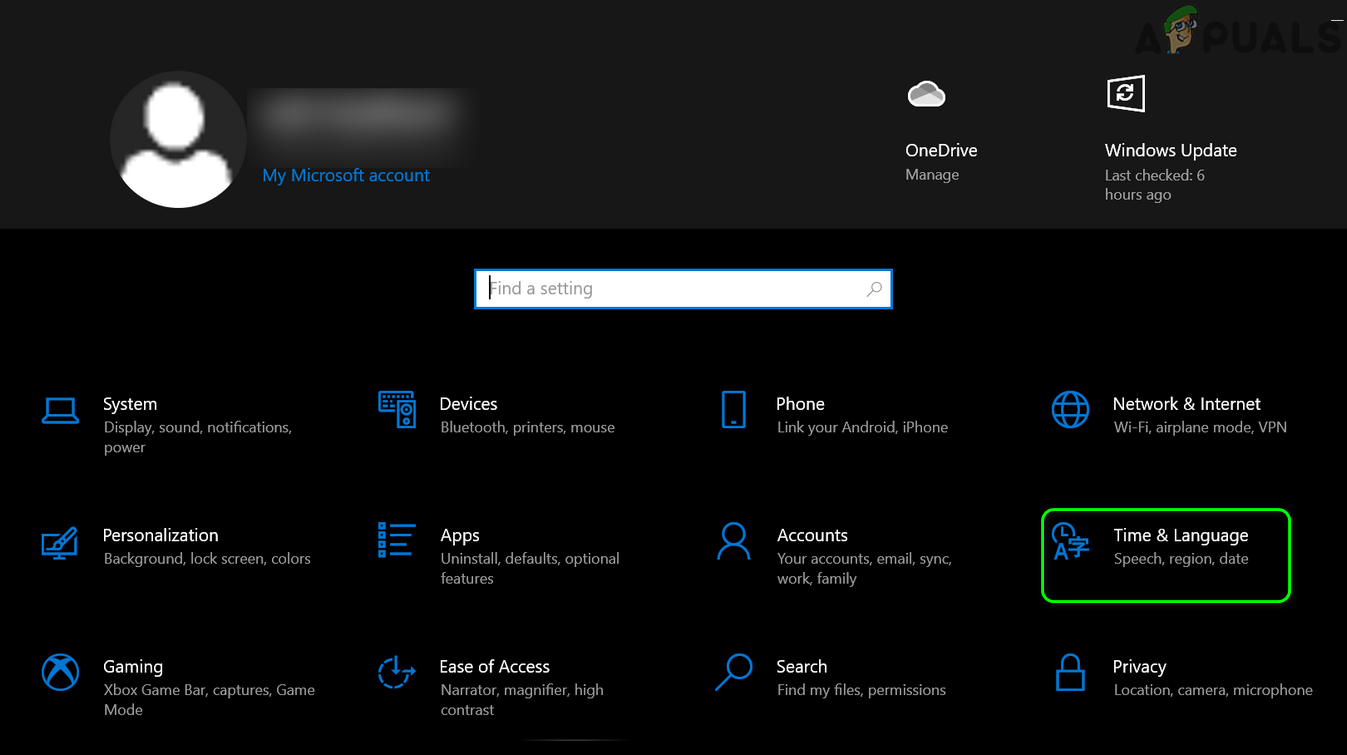
Open Time & Language in the Windows Settings - Check if your system has more than one language installed. If not, click Add a language & follow the prompts to add one.
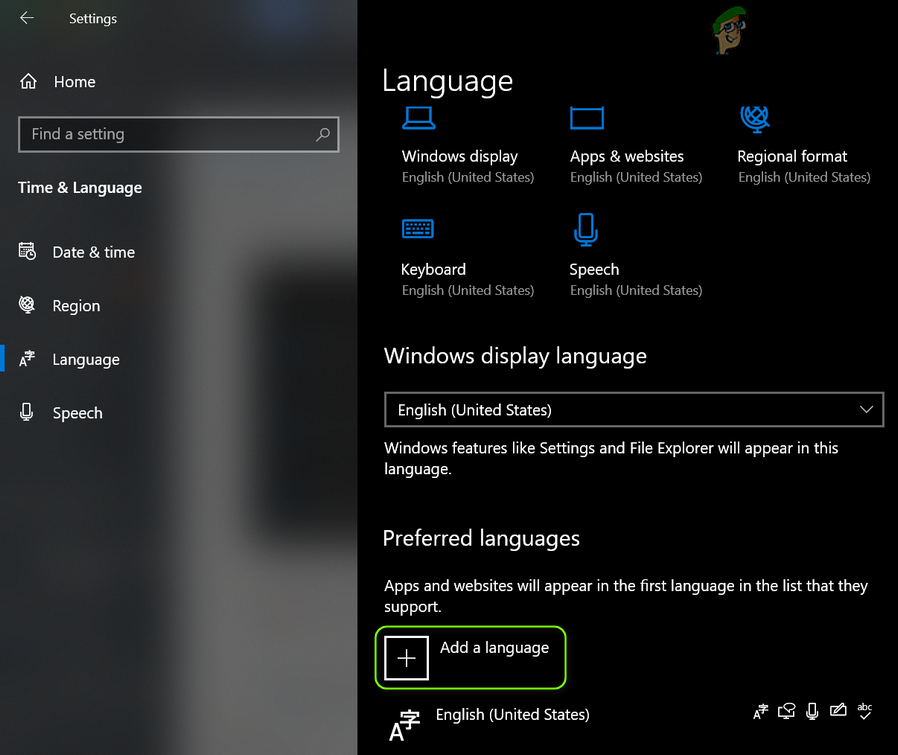
Add a 2nd Language to Your System - If a second language is already installed, open the Windows display language dropdown & select that other language. Make sure the language you want to remove is not set as the display language. If possible, choose a display language that’s different from the one you’re removing (for example, if you want to remove English (United States), do not select English (United Kingdom)).
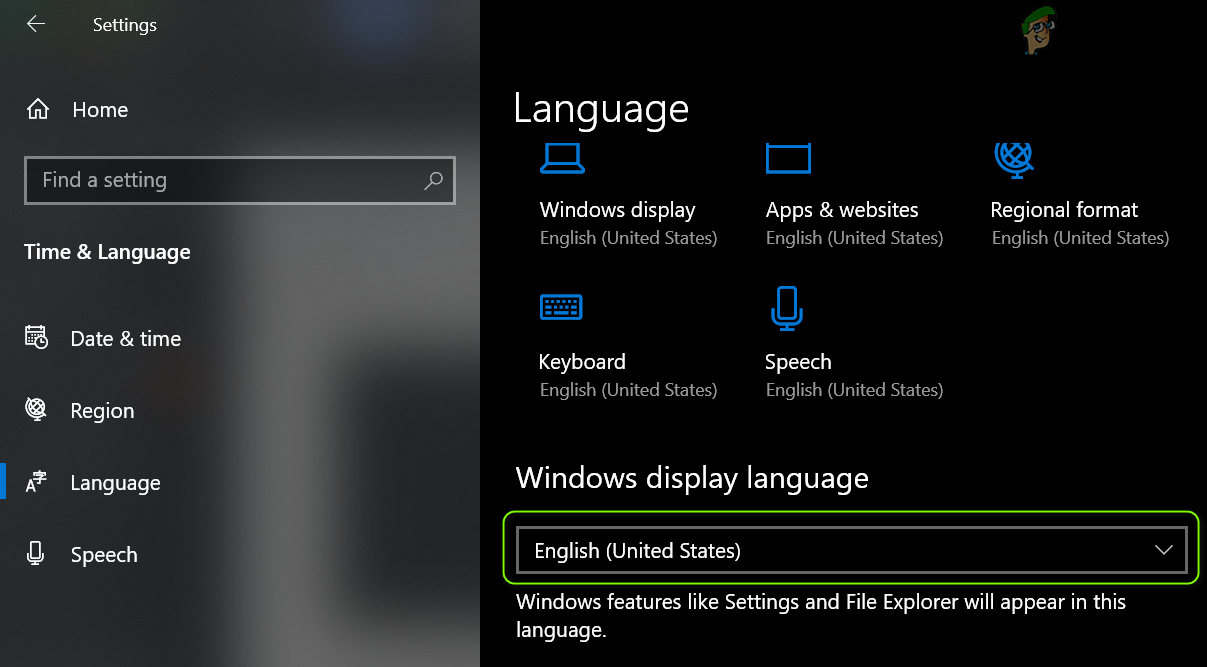
Change Windows Display Language - Reboot your PC & check if you can remove the problematic language.
- If that didn’t help, try removing the problematic language, then re-adding it.
- If that still doesn’t help, try removing/re-adding the language you want to keep, then remove the problematic one again.
If the issue persists, check if removing the problematic language through an Office application (e.g., Word) works.
1.2. Re-arrange the Languages
- Open the Language tab in Time & Language (as above).
- Expand the language you want to keep (e.g., English (United States)) & click the Up arrow until it’s at the top of the list.
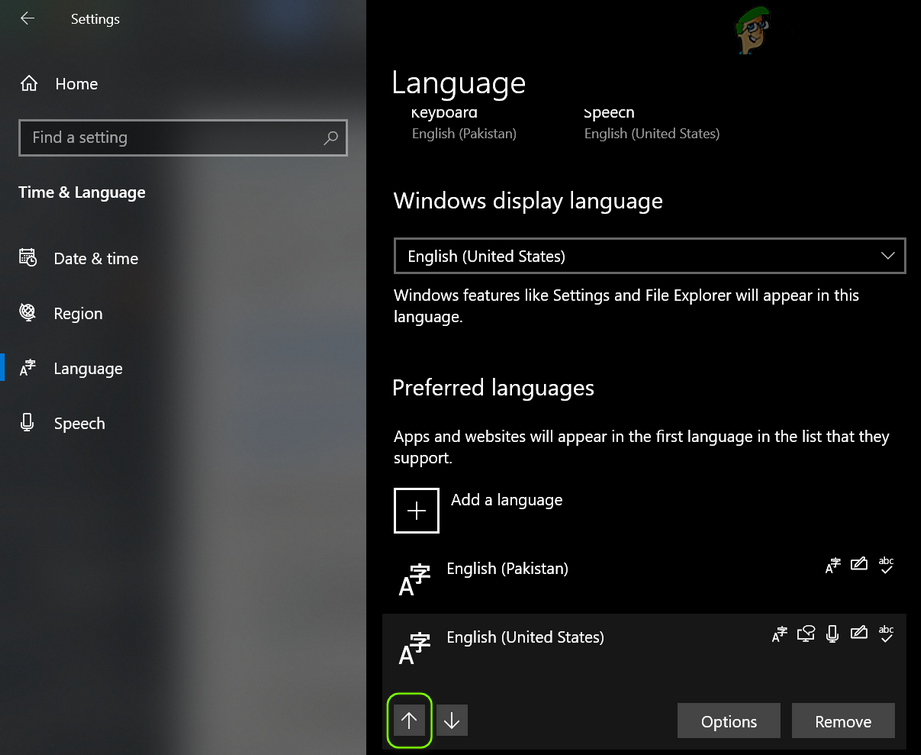
Move the Required Language to the Top of the List - Move the language you want to remove to the bottom of the list & reboot your PC.
- After reboot, check if you can remove the problematic language.
1.3. Install the Language Pack of the Problematic Language
- Go to the Language tab in Time & Language & expand the problematic language.
- Click Options & check if a Language pack is available. If it is, install it & reboot your PC.
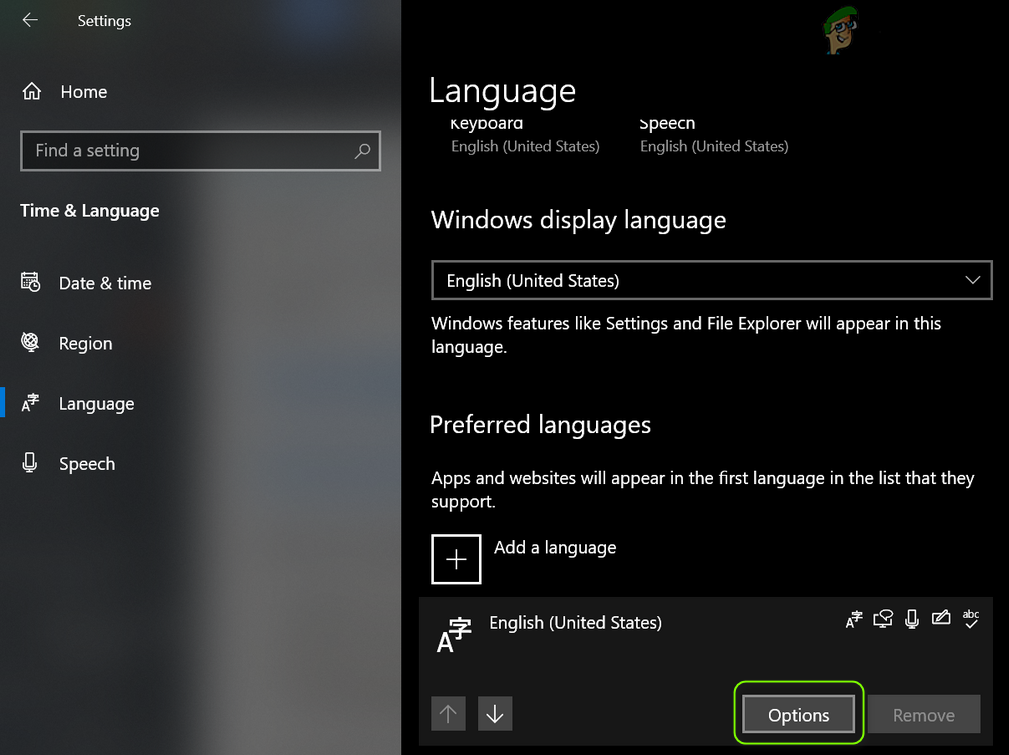
Open the Options of the Problematic Language - After reboot, check if you can remove the problematic language.
- If not, try removing/re-adding the keyboard for the problematic language (or for the language you want to keep) & test again.
2. Change Regional Settings of Your System
Your regional settings might be blocking the removal or causing the language to reappear. Adjusting these settings can help. Before you proceed, make sure your region matches your actual location (for example, if you’re in Canada, set the region to Canada).
2.1. Change System Locale
- Press the Windows key & type Control Panel. In the results, select Control Panel.
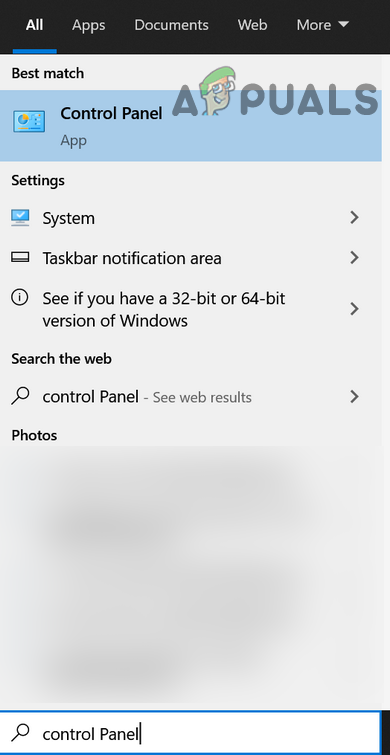
Open Control Panel - Open Clock and Region & click Region.

Open Region in Clock and Region - Go to the Administrative tab & click Change system locale.
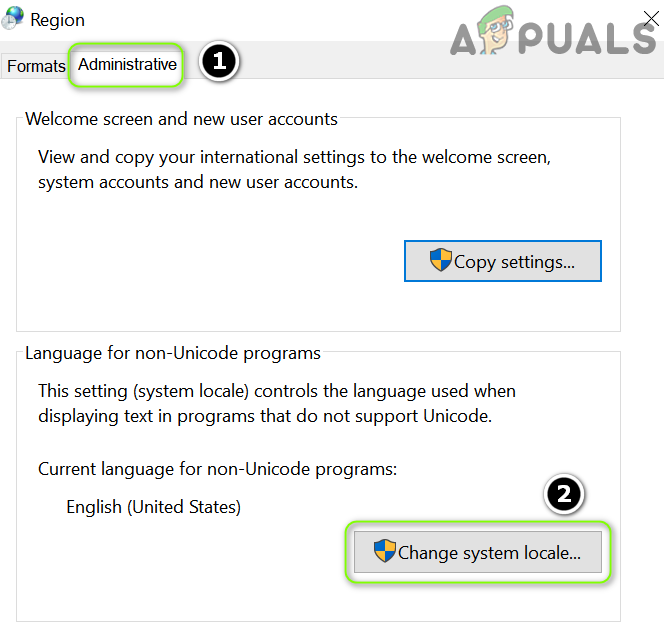
Click on Change System Locale - Make sure the language you want to remove is not set as the Current system locale. Also check Beta: Use Unicode UTF-8 for worldwide language support.
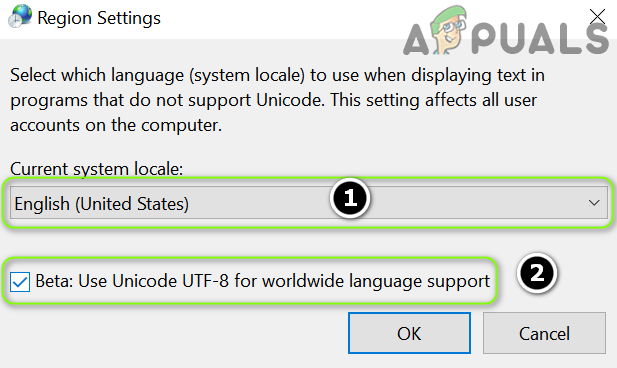
Change System Locale & Enable UTF-8 Support - Apply your changes & reboot your PC, then check if you can remove the language.
2.2. Copy Settings to Welcome Screen
- Remove the problematic language (if possible, use an Office application to remove it).
- Go to the Administrative tab of Region (as above) & click Copy settings.
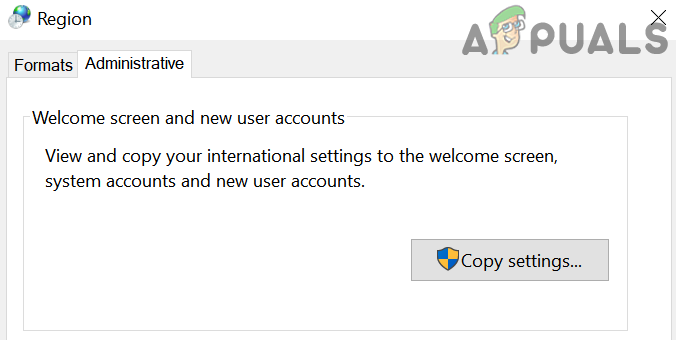
Click on the Copy Settings Button - Make sure the Current user settings are correct. At the bottom, check both options under “Copy your current settings to” (“Welcome screen and system accounts” & “New user accounts”).
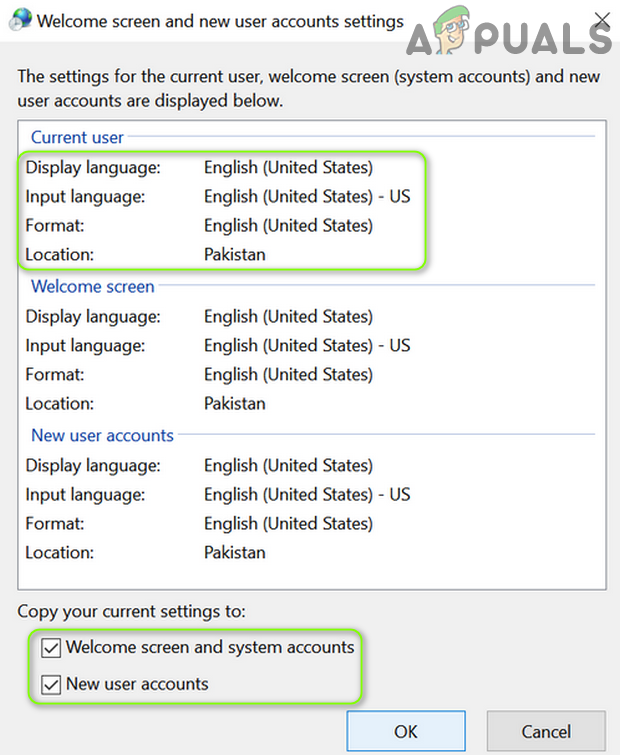
Copy Your Settings to Welcome Screen & New User Accounts - Apply your changes & reboot your PC, then test again.
3. Use PowerShell Commands
If none of the solutions above worked, try the commands below to remove the problematic language.
Right-click the Windows button & choose Windows PowerShell (Admin). If prompted by UAC, click Yes. Then run the commands below.
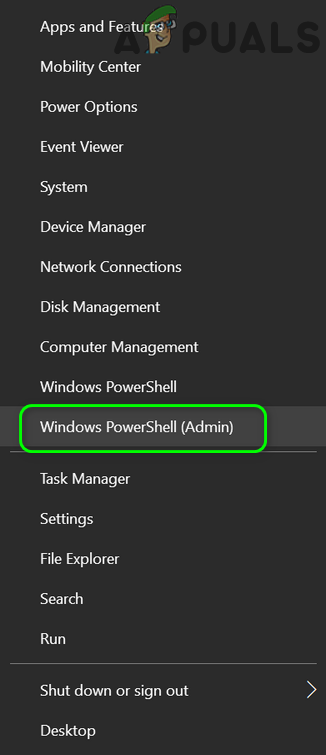
3.1. Remove the Problematic Language
- Run:
Get-WinUserLanguageList
- Note the LanguageTag of the problematic language (e.g., en-US).
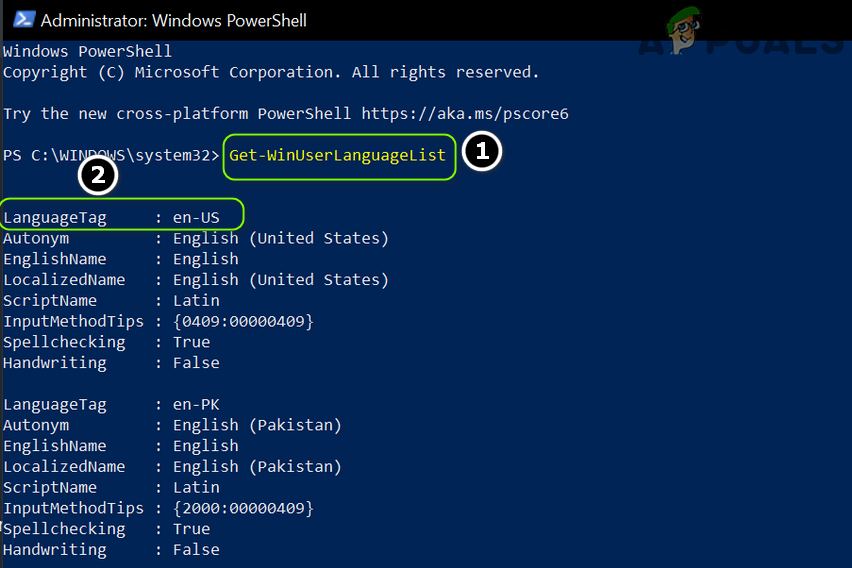
Note Down the LanguageTag
- Then run the following (replace <languagecode> with the tag of the language you want to remove, e.g., en-US):
$LangList = Get-WinUserLanguageList $MarkedLang = $LangList | where LanguageTag -eq "<languagecode>" $LangList.Remove($MarkedLang) Set-WinUserLanguageList $LangList -Force

Use MarkedLang to Remove the Language - Reboot your PC & check if the language is removed.
3.2. Set the Desired Language as the Default
- Note the LanguageTag (from above) of the language you want to keep. For example, to set US English as default, run:
$1 = New-WinUserLanguageList en-US
- Then run:
Set-WinUserLanguageList $1
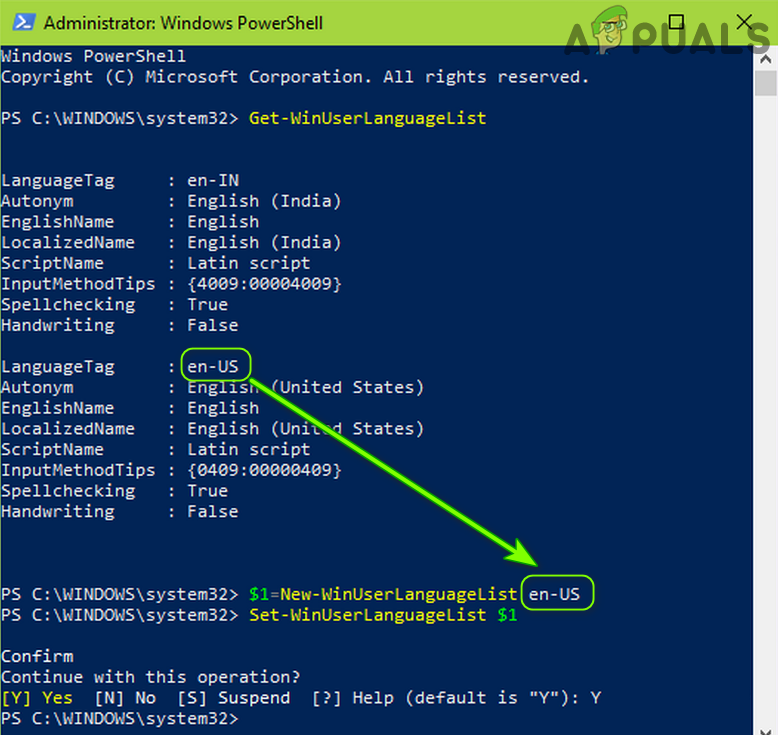
Set Your Desired Language as Default - Close PowerShell & reboot your PC.
- After reboot, check if you can remove the problematic language.
3.3. Use the lpksetup Command
- Note the LanguageTag of the problematic language. For example, to remove English (United Kingdom) with tag en-GB, run:
lpksetup.exe /u en-GB
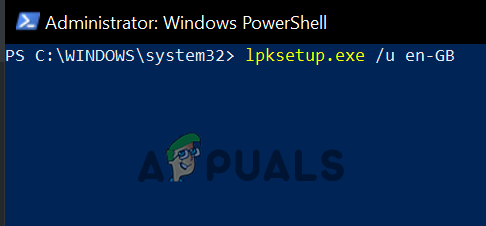
Use lpksetup Command - Reboot your PC & check if the issue is resolved.
3.4. Remove LanguageExperiencePack
- Run:
Get-AppxPackage -allusers *LanguageExperiencePack*
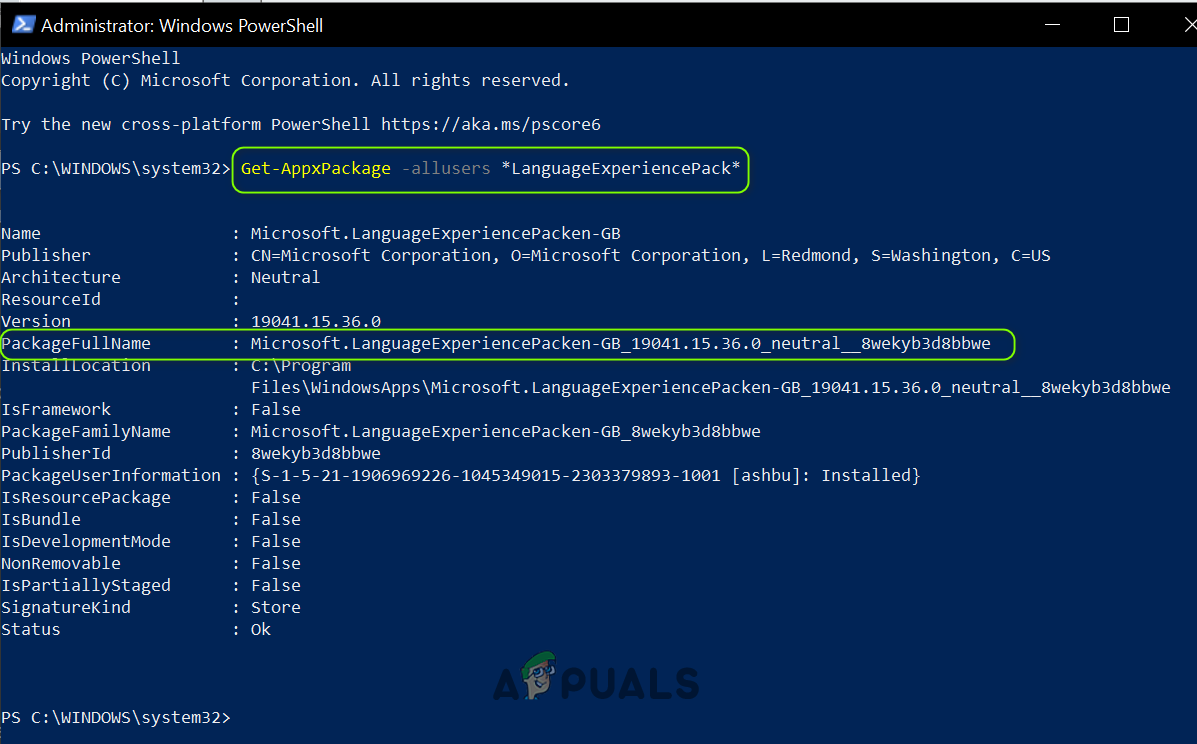
Note Down the Package Full Name - In the list, note the PackageFullName of the problematic language. For example, English (United Kingdom) may appear as Microsoft.LanguageExperiencePacken-GB_19041.15.36.0_neutral__8wekyb3d8bbwe.
- Then run:
Remove-AppxPackage -AllUsers -Package "Microsoft.LanguageExperiencePacken-GB_19041.15.36.0_neutral__8wekyb3d8bbwe"
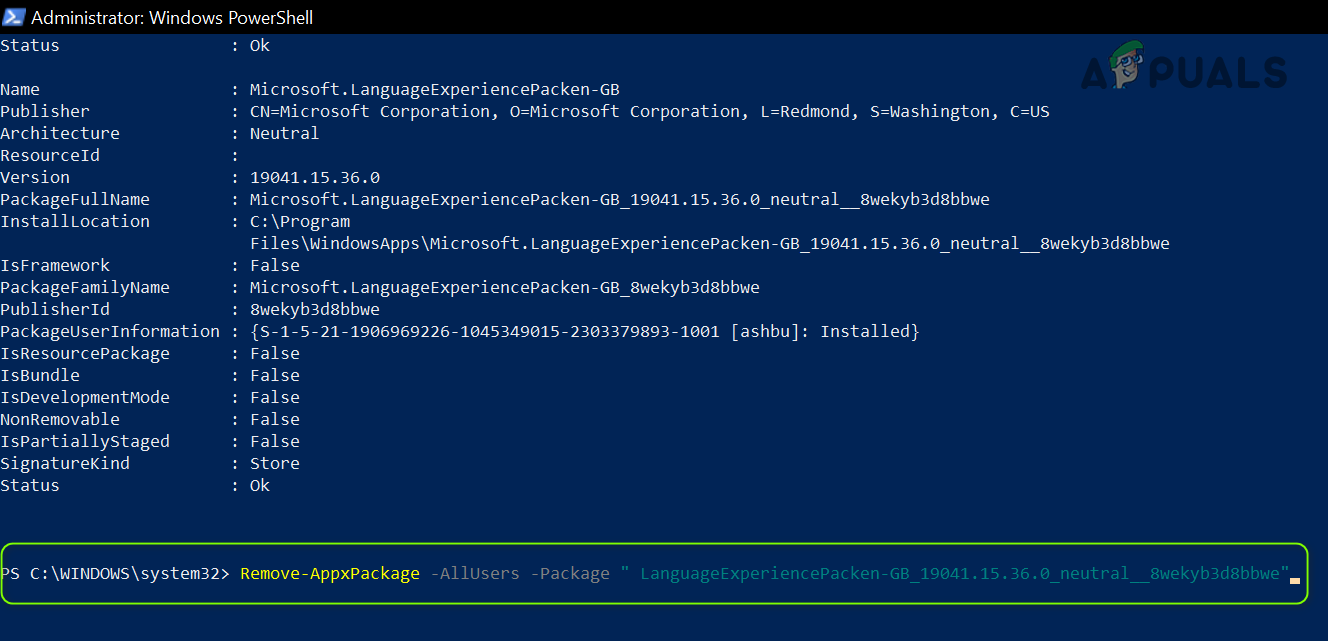
Remove the Full Language Package - Reboot your PC & check if the issue is resolved.
4. Edit the System’s Registry
If the problem continues, the registry may be misconfigured. Editing a few keys can help.
Warning: Proceed with extreme caution & at your own risk. Editing the registry incorrectly can create serious issues. Make sure to back up your system’s registry first.
Press the Windows key & type Registry Editor. In the results, right-click Registry Editor & choose Run as administrator. Then try the edits below.
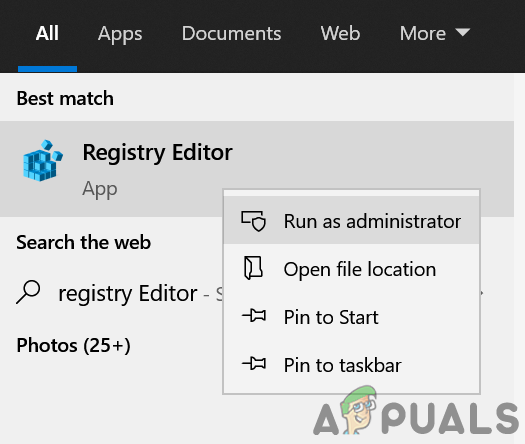
4.1. Edit the InstallLanguage Key
- Go to:
Computer\HKEY_LOCAL_MACHINE\SYSTEM\CurrentControlSet\Control\Nls\Language
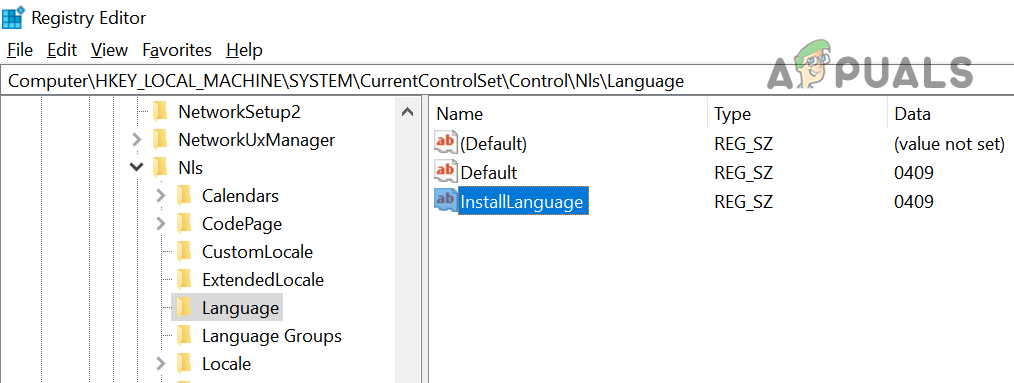
Change the Installed Language Value - Double-click InstallLanguage & change its value to the language you want to keep. You can find values in Microsoft’s Keyboard Identifier list (e.g., UK English is 0x00000809; enter 00000809).
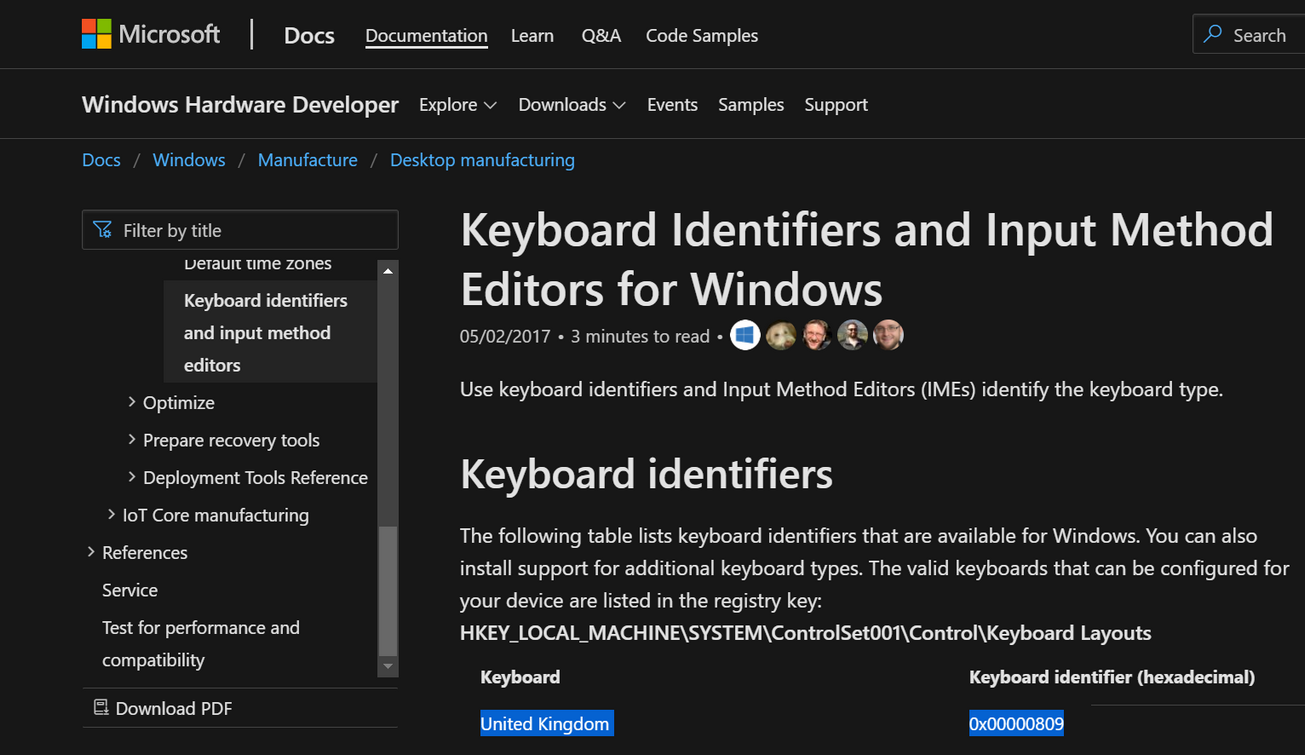
Find the Keyboard Identifier - Reboot your PC & check if the issue is resolved.
4.2. Rename the Language Key in the User Profile
- Go to:
HKEY_LOCAL_MACHINE\SOFTWARE\Microsoft\Windows NT\CurrentVersion\ProfileList
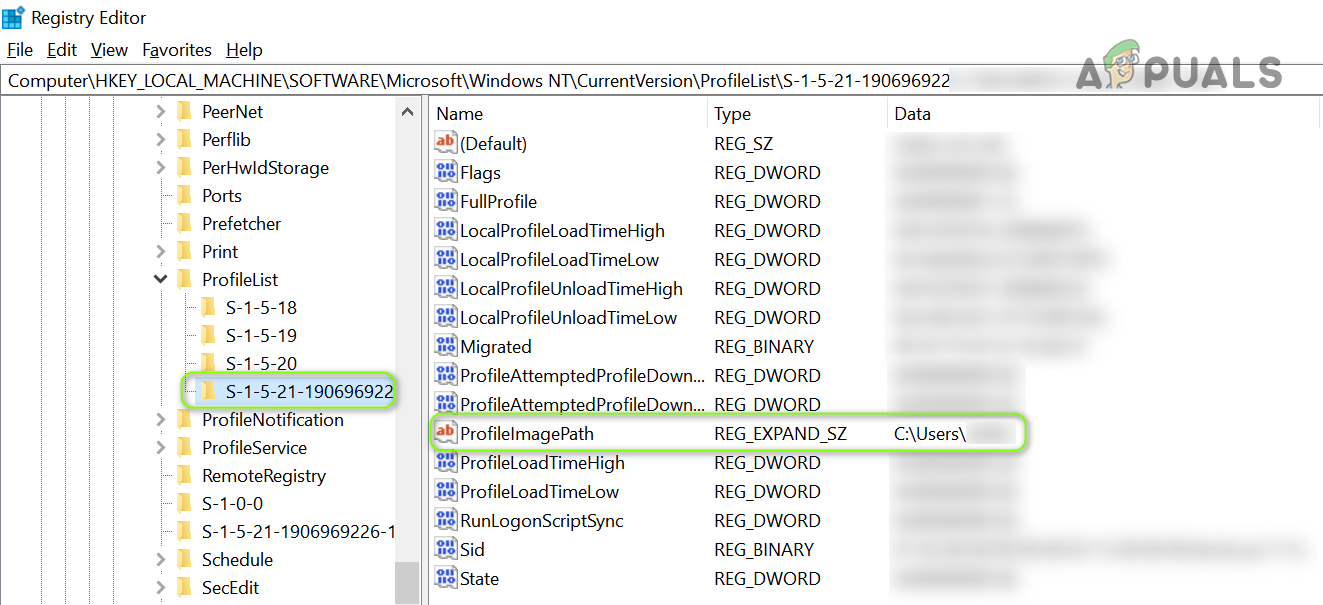
Find Your Profile in the Registry - Expand ProfileList & select the first subkey under it.
- In the right pane, check the value of ProfileImagePath. If it matches your profile, note it. If not, check other subkeys until you find the one that matches your user profile (SIDs starting with S-1-5-21 typically represent user profiles).
- Now go to:
HKEY_USERS\
- Expand the user profile that matches your profile (from step 3) & browse to:
Control Panel>>International>>User Profile
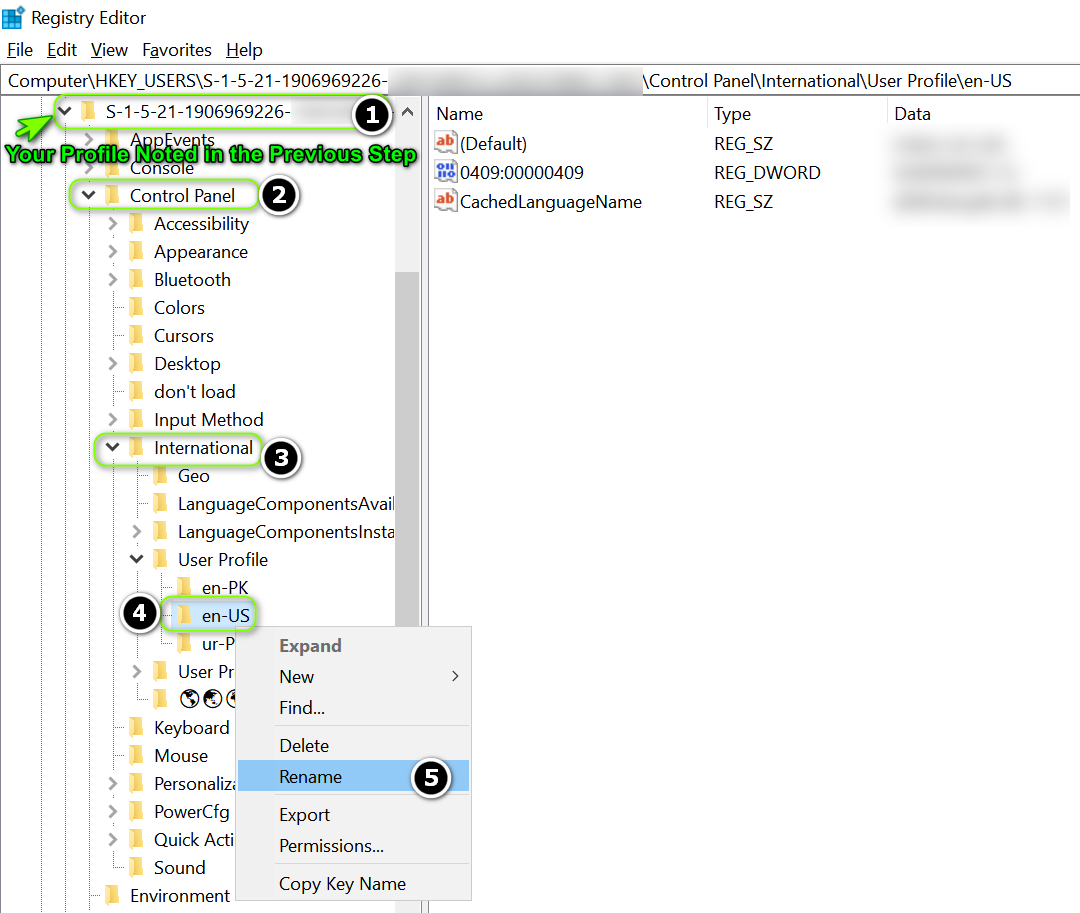
Rename the Language in the User Profile - Rename the Language key you don’t want to the one you want to keep (e.g., rename EN-GB to EN-US if you want to keep EN-US).
- Close the editor & reboot your PC.
- After reboot, check if the language issue is gone.
4.3. Delete the Keyboard Layout Key
- Go to:
HKEY_LOCAL_MACHINE\SYSTEM\CurrentControlSet\Control\Keyboard Layouts\
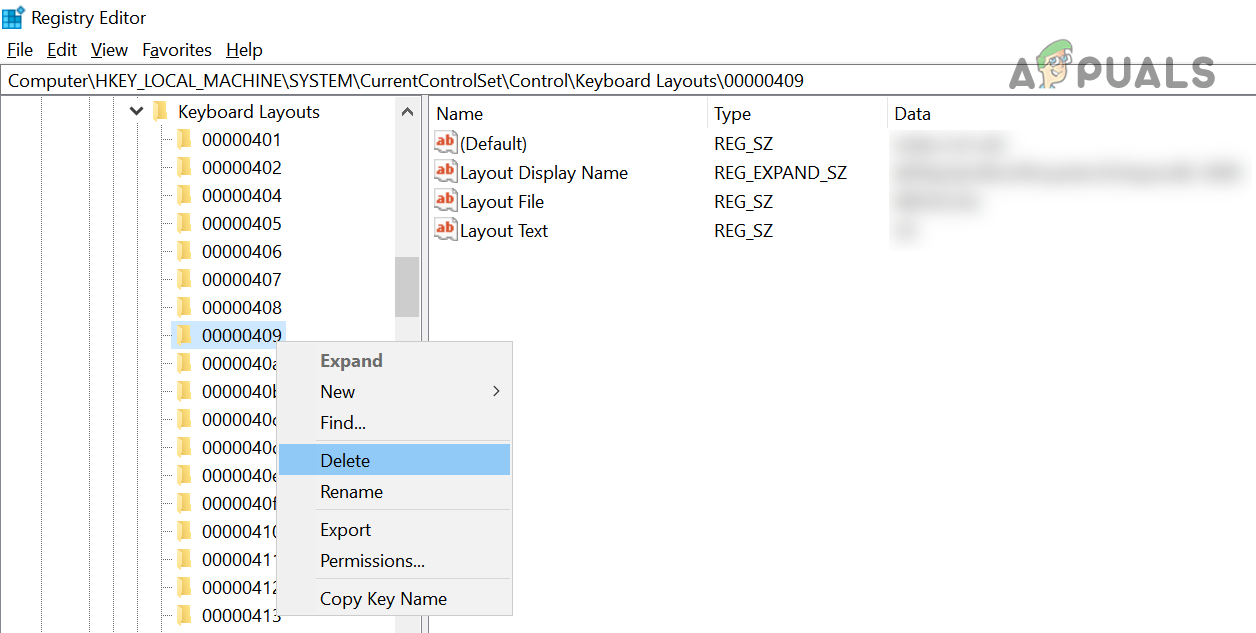
Delete the Key Related to the Language That You Want to Remove - Find the value for the problematic keyboard layout using the Keyboard Identifier list (e.g., English (United States) keyboard is 00000409) & delete that key.
- Reboot your PC & check if you can remove the language.
4.4. Edit the Preload Registry Keys
- Go to:
Computer\HKEY_USERS\.DEFAULT\Keyboard Layout\Preload

Note the Key & Match it with the Keyboard Identifier - Open a web browser (keep Registry Editor open) & go to Microsoft’s Keyboard Identifiers page.
- Back in Registry Editor, note the Data value of the first entry under Preload (below Default), e.g., 00000409.
- Search for that value on the Keyboard Identifiers page to see which keyboard it is (e.g., 00000409 is United States – English). Repeat this for the other entries until you find the problematic keyboard.
- Once you’ve identified it, go back to Registry Editor & delete the key for the problematic language.
- Now repeat the same for:
HKEY_CURRENT_USER\Keyboard Layout\Preload HKEY_USERS\.DEFAULT\Control Panel\International\User Profile HKEY_USERS\.DEFAULT\Control Panel\International\User Profile System Backup
- Reboot your PC & check if the issue is resolved (if not, try deleting the language in Windows Settings again).
- If it’s still there, try changing the values of keyboards you don’t need in the Preload key to 0, then reboot (note: the Language bar may not show on the taskbar).
- If the issue persists, go back to the Preload key (step 1), right-click it & choose Permissions, then click Advanced.
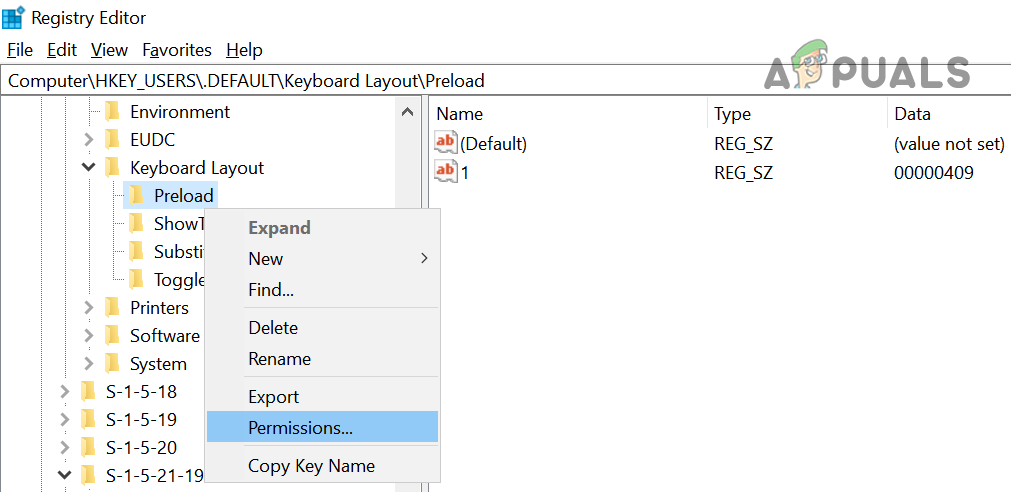
Open Permissions of the Preload Key - Click Disable inheritance & confirm.
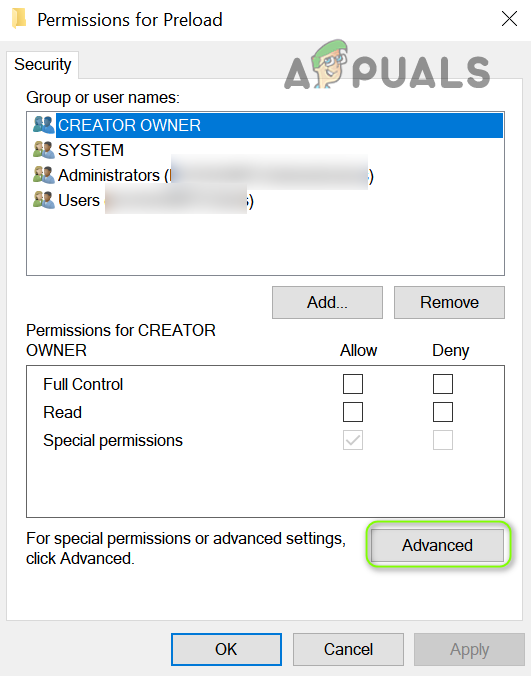
Open Advanced Permissions of the Preload Key - Click Apply. In the Permissions for Preload window, select SYSTEM.
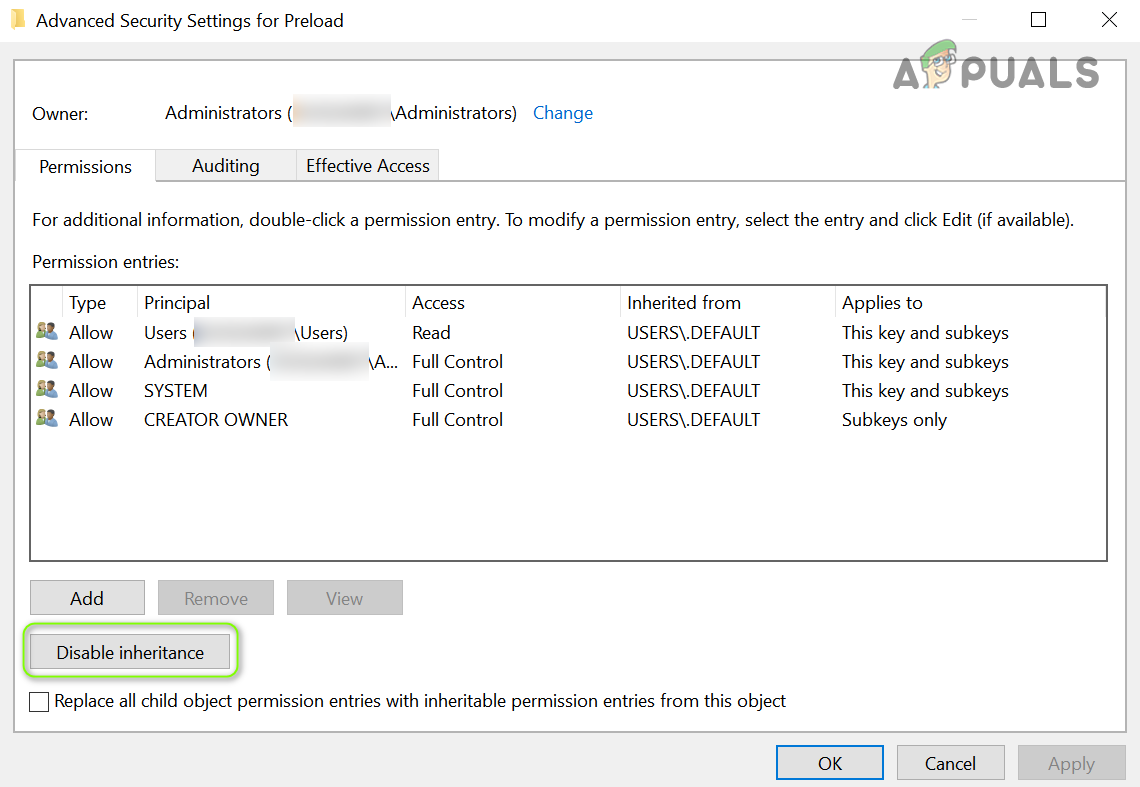
Disable Inheritance of Preload Key - Uncheck Full control for the SYSTEM account (make sure you’re changing the SYSTEM permissions, not your admin account) & apply the changes. Note: You won’t be able to add/delete keyboard layouts until you restore Full control to SYSTEM.
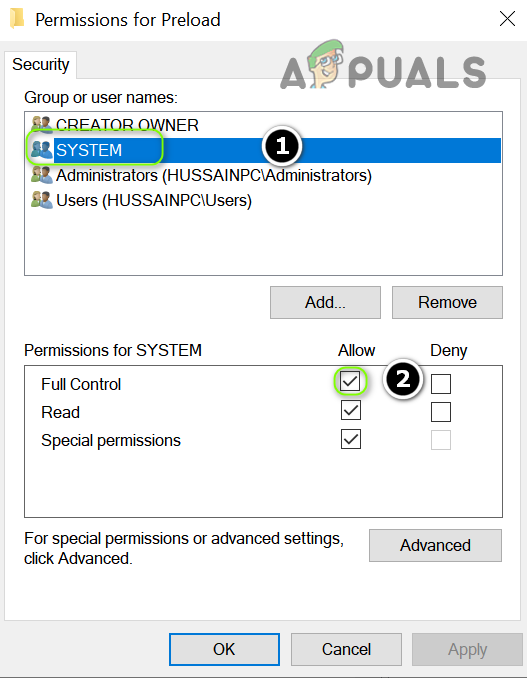
Disable Full Control of the System Account on the Preload Key - Reboot your PC & check if the issue is resolved.
- If not, try disabling Full control for the SYSTEM account on the parent Keyboard Layout key as well.
- If that still doesn’t help, try deleting the Preload key at:
Computer\HKEY_USERS\.DEFAULT\Keyboard Layout\Preload
If the issue persists, check if creating a new user account resolves it. If it’s still not fixed, a 3rd-party cleaner utility may help.




